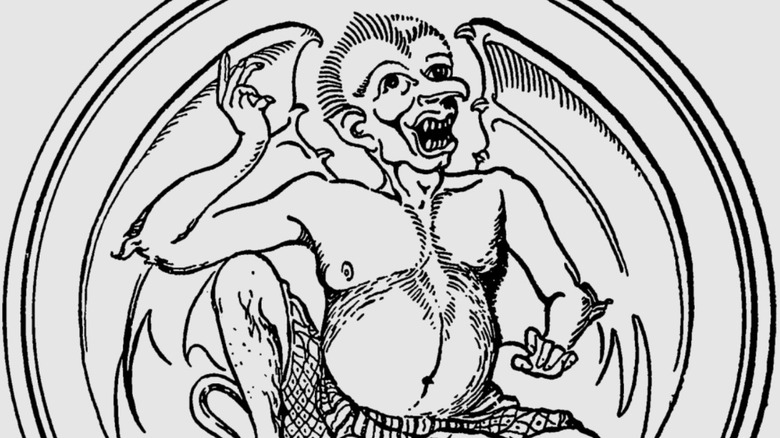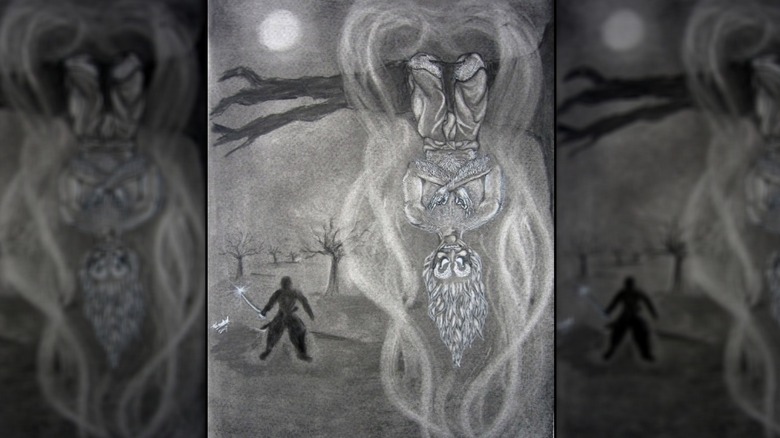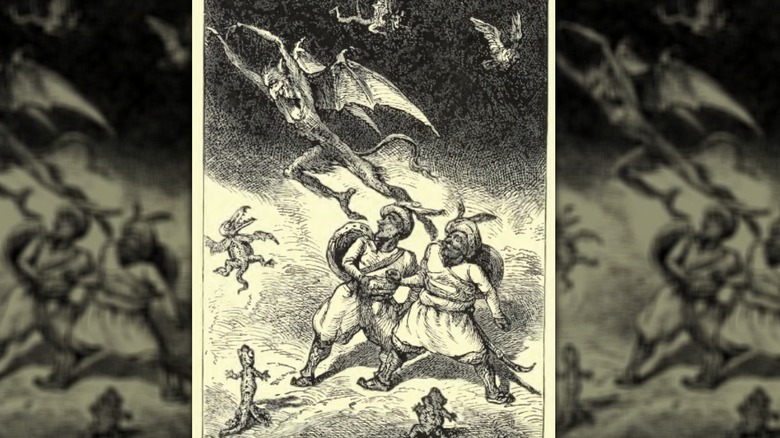The Hindu Legend That Helped Inspire Dracula
Chances are, you've heard of Count Dracula, but have you ever of a vetala? Rooted in Hindu mythology, vetalas are evil, otherworldly beings that haunt graveyards — something like ghosts with the power to reanimate dead bodies and the ability to see a person's destiny, according to "Rethinking Ghosts in World Religions." Legend says that vetalas even lurk upside down in trees like bats. If that sounds like a vampire to you, you'd be right: Vetalas are often seen as one important — if highly underrated — jumping-off point for the vampire legend, from Bram Stoker's infamous count to Edward Cullen and his family in the blockbuster "Twilight" book and movie series.
Stoker, author of 1897's "Dracula" and the Stan Lee of sorts for modern vampire-stans, had an interest in the Indian occult such as vetalas. He is known to have read "Vitram and the Vampire," a Western translation of an Eastern story collection — "Vetala Panchvimshati," or "Baital Pachisi" — that included tales of vetalas. Stoker's family served in India, and he was familiar with Sir Richard Burton, who translated the collection from Sanskrit. Certainly, historical characters like Vlad the Impaler, Prince of Wallachia influenced Stoker's most famous creation, but vampire and vampire-like stories have been around for centuries — among them vetalas, with many similar powers and weaknesses.
[Featured image by Narisara Nuwattiwong via Wikimedia Commons | Cropped and scaled]
Trickster or demon?
Vetala stories have been a part of Hindu tradition for hundreds of years and have taken many forms with different cultural and religious significance. Like many similar mythological characters worldwide, vetala legends are often used to teach Hindu children lessons. In some cases, vetalas are more evil than others. Sometimes they torment humans with riddles, while often, they have darker intentions. By the time Stoker was exposed to vetala stories, they were typically characterized as something demonic and ghastly.
According to the "Encyclopedia of Demons in World Religions and Cultures" by Theresa Bane, all vetalas were once human children who died but were not buried properly. As such, vetalas possess other dead bodies, causing horrible types of disfiguration, among them eyes like a bat and the deathly pallor of a corpse — sound familiar? Most importantly, though, vetalas drink human blood, and their ability to control human minds and to know the past, present, and future is similar to vampires, who are also often said to possess psychic abilities.
One way, among others, vetalas are sometimes defeated is to identify the improperly interred child's body and give it a proper burial, as Bane goes on to write. That's similar to how Western vampires are vanquished. According to National Geographic historian Mark Jenkins, author of "Vampire Forensics," "Any sort of religious symbol might deter a vampire," including magic circles, holy ground, and churchyards.
[Featured image by Harshadpd via Wikimedia Commons | Cropped and scaled]
Vetala stories are still told today
Clearly, there are similarities between Bram Stoker's Dracula — and vampire legends more broadly — and the vetalas from Hindu culture. As Atlas Obscura explains, in a Stoker-era edition of vetala stories, the word "vetala" is even translated to "vampire," a word drawn from Eastern European languages (via Princeton). And like vampires, vetalas still show up in popular culture today, both in the East and the West.
One notable example came in 2012 in an episode of the hit U.S. TV series "Supernatural," where the characters battle the creatures. Vetalas were also featured in "Vikram Aur Betaal," an Indian TV show from the 1980s. On the lasting legacy of vetalas all across the world, one Hindu priest told Atlas Obscura in 2020 that while a young boy, his father passed down vetala stories to him, explaining they could see good and evil in everyone. And as a result, the priest was cautious around cemeteries as a kid.
The priest added, "As with any myth, any frightening story or creature, some people believe, some don't. But I've found that when something goes amiss, when there's a sound in a cemetery, an unexplained shadow or disturbance, people change their minds."
[Featured image by Ernest Griset via Wikimedia Commons | Cropped and scaled]


